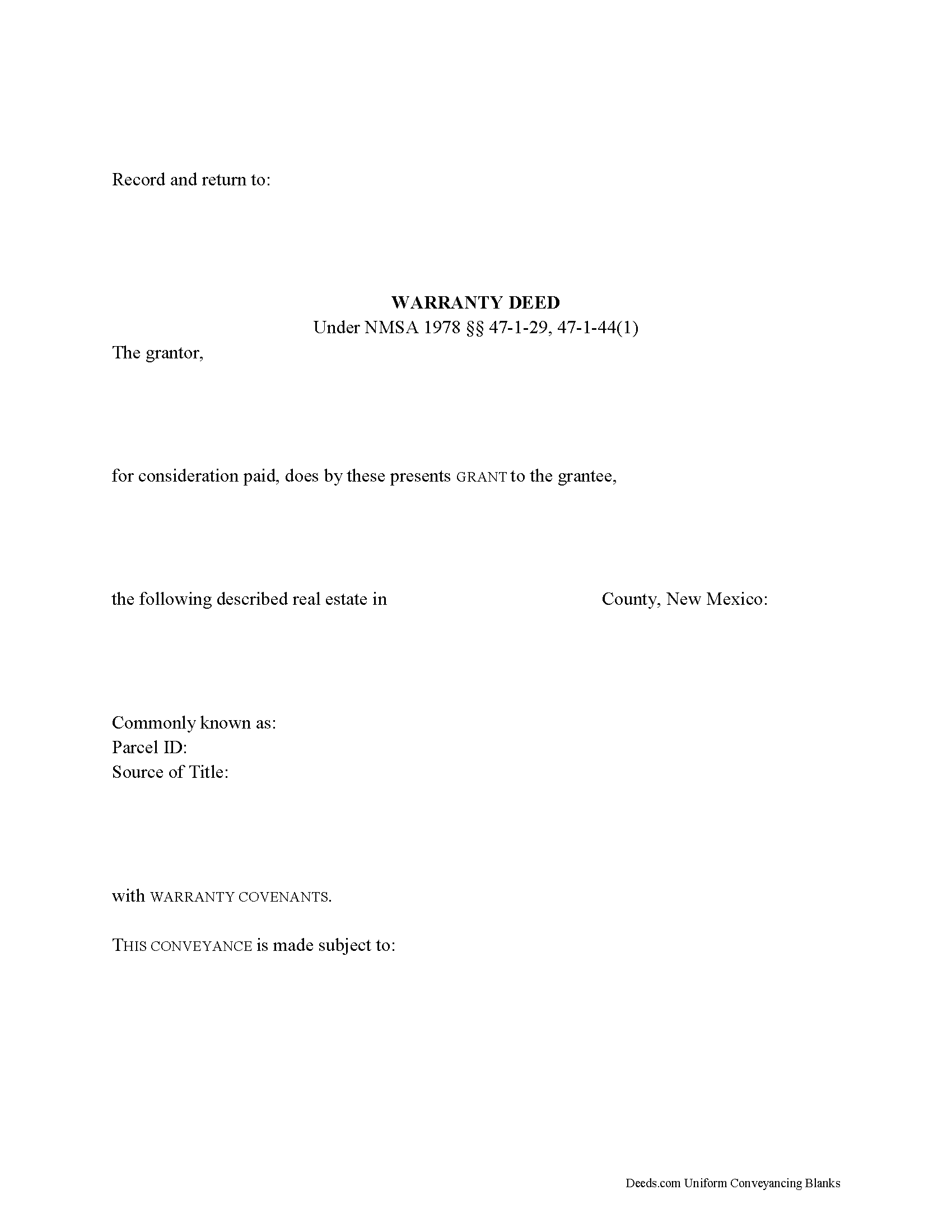Download New Mexico Warranty Deed Legal Forms

New Mexico Warranty Deed Overview

In New Mexico, real property can be transferred from one party to another by executing a warranty deed. Warranty deeds are statutory under NMSA 1978 Sections 47-1-29 and 47-1-44(1).
The statutory form includes the words "with warranty covenants" (NMSA 1978 Section 47-1-44(1)). When the words "warranty covenants" are used in a conveyance, they carry implied covenants that the grantor holds title to the property; that the property is free from encumbrances (with the exception of any noted in the deed); that the grantor has "good right to sell and convey the same"; and that the grantor, "and his heirs, executors, administrators, and successors shall warrant and defend" the title against all lawful claims and demands (NMSA 1978 Section 47-1-37). So, statutory warranty deeds offer the highest level of protection to the grantee.
A lawful warranty deed includes the grantor's full name, mailing address, and marital status, and the grantee's full name, mailing address, marital status, and vesting. Vesting describes how the grantee holds title to the property. Generally, real property is owned in either sole ownership or in co-ownership.
For New Mexico residential property, the primary methods for holding title in co-ownership are tenancy in common, joint tenancy, and community property. A grant of ownership of real estate to two or more unmarried persons is presumed to create a tenancy in common, unless a joint tenancy is expressly created in the conveyance (NMSA 1978 Section 47-1-15). A conveyance to a married couple is presumed to be community property, with some exceptions (NMSA 1978 Section 40-3-12).
As with any conveyance of realty, a warranty deed requires a complete legal description of the parcel. Recite the prior deed reference to maintain a clear chain of title, and detail any restrictions associated with the property. Finally, it must meet all state and local standards for recorded documents. Note that because New Mexico is a nondisclosure state, certain types of personal information, including the consideration exchanged in a transfer of property, are withheld from public record.
Sign the deed in the presence of a notary public or other authorized official. Record the deed at the county clerk's office in the county where the property is located for a valid transfer. Contact the same office to confirm accepted forms of payment.
All transfers require a Real Property Transfer Declaration Affidavit, which details the sales information for the transfer. There are certain exceptions, such as an instrument delivered to establish a gift or a distribution, or an instrument pursuant to a court-ordered partition. If the transfer is exempt from the affidavit requirement, detail the reason why on the face of the deed. See NMSA 1978 Section 7-38-12.1(D) for a list of exemptions. File this affidavit with the assessor's office within 30 days of the deed's recordation.
This article is provided for informational purposes only and is not a substitute for legal advice. Contact an attorney with any questions related to warranty deeds or transfers of real property in New Mexico.
(New Mexico WD Package includes form, guidelines, and completed example)